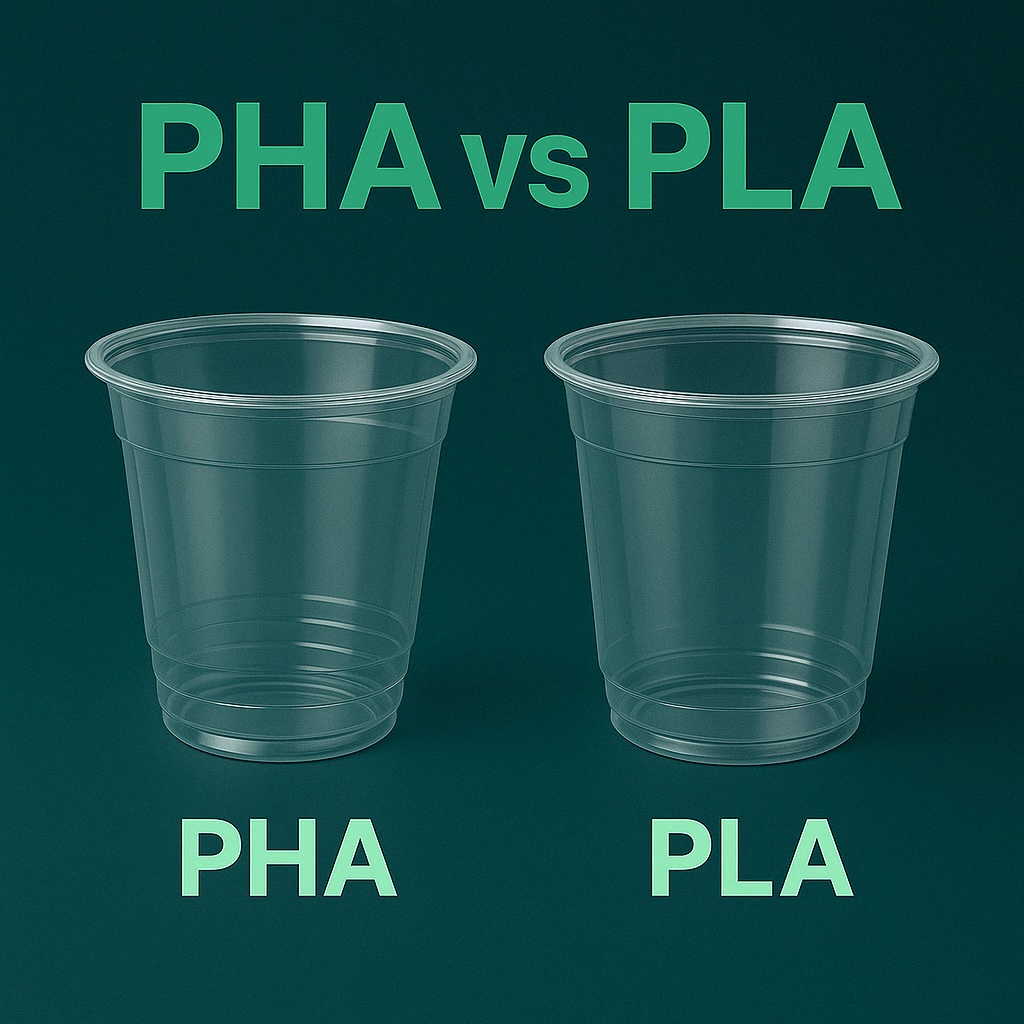PHA vs PLA: How Can Sustainability and Industrial Performance Coexist?

In the search for sustainable alternatives for industrial packaging, the bioplastics PLA (polylactic acid) and PHA (polyhydroxyalkanoate) emerge as promising solutions, albeit with significant differences.
PLA, mainly derived from corn starch and sugarcane, offers good strength and transparency but requires specific industrial conditions for composting (temperatures above 60°C in controlled environments). Its degradation in natural environments can take between 2 and 5 years, potentially leaving microplastic residues that degrade slowly
PHA vs PLA: How Can Sustainability and Industrial Performance Coexist?
In contrast, PHA is produced through bacterial fermentation of vegetable oils and fats, resulting in a completely biodegradable material. During its decomposition process, PHA leaves no microplastic residues and can be composted under home conditions in just 3 to 6 months. It complies with strict standards and, depending on purity levels, it can even biodegrade in organic waste streams.
PHA’s strength and versatility stand out particularly in industrial packaging applications, where it matches or even exceeds the performance of PLA and conventional plastics. When blended appropriately, PHA can achieve higher thermal resistance (up to 110°C, compared to PLA’s 90°C). It retains its mechanical properties under extreme temperatures (both cold and heat), making it ideal for hot and cold food containers, electronic components, and a wide range of other applications.
Additionally, PHA is completely free from toxic substances such as PFAS (per- and polyfluoroalkyl substances) and BPA (bisphenol A), aligning perfectly with new regulations like the Restricting Forever Chemicals Act in the United States and the EU ban on PFAS in food packaging (Regulation 2023/2855), both of which take effect in 2025.
This combination of durability and chemical safety positions PHA as the ideal solution for industries seeking to meet environmental regulations without compromising product performance.
PHA applications range from single-use food packaging to durable industrial components. Notably, there is a wide range of uses and the potential to enhance its formulations, offering the versatility that companies need during their transition to bioplastics or biobased materials.
Unlike PLA, which may become brittle over time, PHA maintains its flexibility and strength throughout its useful life, allowing manufacturers to precisely define the desired durability of the final product.
This feature, combined with its ability to integrate into existing production lines without major modifications, makes PHA a highly viable alternative.
The time to adopt truly biodegradable and microplastic-free materials is now!
Position your company at the forefront of sustainable innovation, as environmental regulations become increasingly stringent and seek proven solutions.
At Green Team, we manufacture PHA-based raw materials to transform most disposable or reusable conventional plastic packaging into biodegradable, compostable, and now also: recyclable products.
At Green Team, We Evolve Matter!
We ship worldwide.

